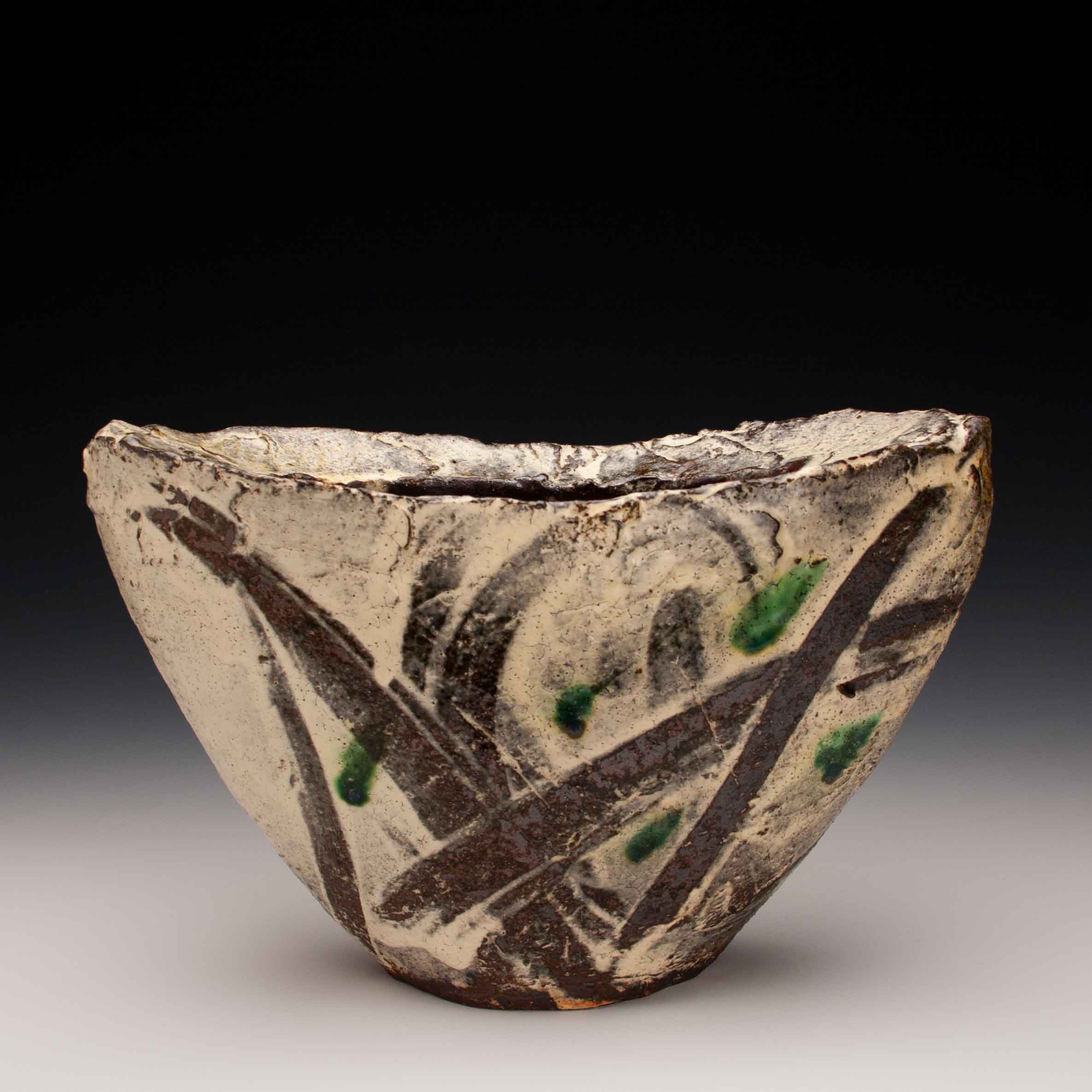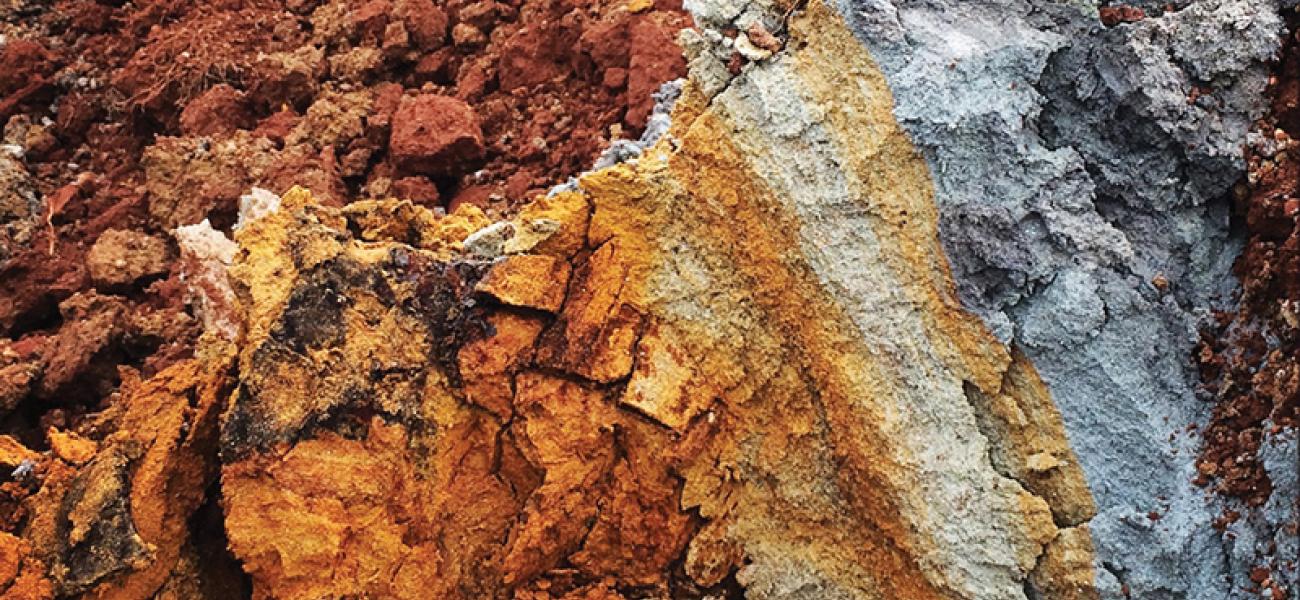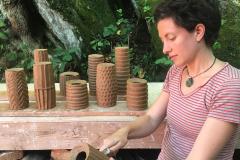 What moves artists, and more specifically,potters,to make what we do,and what brings life to that work? My husband, Michael Hunt,and I began using wild,local materials as a means of finding the kind of coarse beauty we love in old Korean pots. We were drawn to making functional pots because it is satisfying to make something beautiful that can be used. We chose to live in the mountains of western North Carolina because of the community we found in the Penland School area, and because of the abundance of interesting local materials: clays for making our pots, and scrap wood from local sawmills for fueling our kiln. We didn’t anticipate the ways that these materials, approaches to making, and our place have shaped us in return (and possibly we don’t fully understand them even yet). In our search for meaning and beauty in our work, it is the mysterious, ever-shifting interface between our selves and these elements that leads us into a constantly new and expanding creative territory.
What moves artists, and more specifically,potters,to make what we do,and what brings life to that work? My husband, Michael Hunt,and I began using wild,local materials as a means of finding the kind of coarse beauty we love in old Korean pots. We were drawn to making functional pots because it is satisfying to make something beautiful that can be used. We chose to live in the mountains of western North Carolina because of the community we found in the Penland School area, and because of the abundance of interesting local materials: clays for making our pots, and scrap wood from local sawmills for fueling our kiln. We didn’t anticipate the ways that these materials, approaches to making, and our place have shaped us in return (and possibly we don’t fully understand them even yet). In our search for meaning and beauty in our work, it is the mysterious, ever-shifting interface between our selves and these elements that leads us into a constantly new and expanding creative territory.
The main clay body we use is a mixture of coarse red clay from down the road in the little town of Bandana and a more plastic secondary clay from farther down the mountain. Both come from the fields of farmers who have their own relationship with this dirt. Once, our neighbor, who was preparing his farm field and from whom we’d previously gotten clay, spontaneously brought us a tractor-size scoop of a red clay. When we started asking questions to make sure we were getting the same kind of clay as we had dug before, he said in mock indignation, “I’m a farmer—you think I don’t know my own dirt?!” Whereas he is intimately aware of the organic composition and how water drains (or doesn’t!) in this kind of dirt, we have come to know its landscape of particles, color, and working properties. Although our and these farmers’ backgrounds differ, we all have a deep respect for and relationship with this wild dirt, and recognize that in each other.


